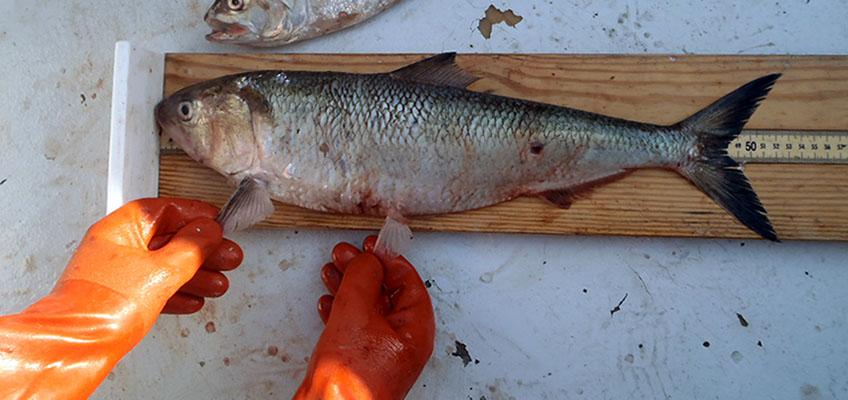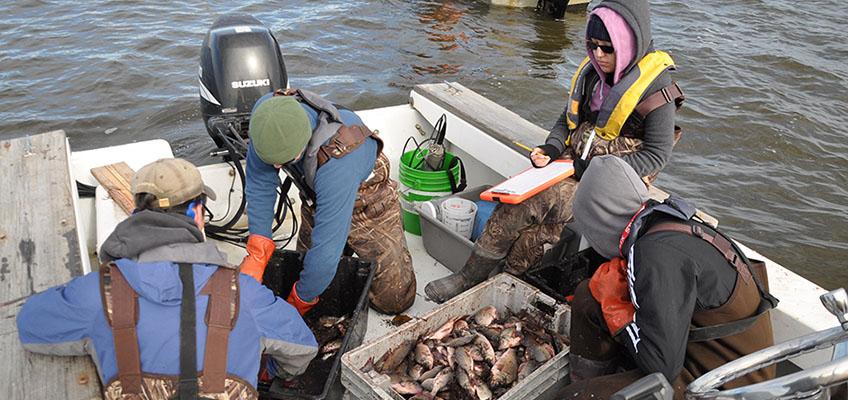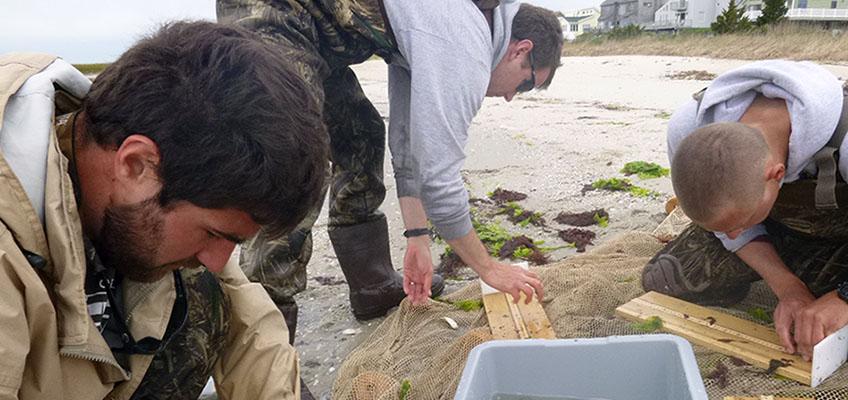Fisheries



Estuaries provide more than 30,000 km2 of nursery habitat for over two-thirds of the economically important fisheries along the East Coast of the United States. A large percentage of these species are obligate users—they spawn in the ocean/lower estuary, enter estuaries as larvae or early juveniles and (hopefully) survive to join the adult population. As a result, the composition, size, and abundance of early life history stages, in particular, function as important indicators of population status. The Mullica River-Great Bay (MRGB) Estuary (NJ) is one such estuarine system in the Middle Atlantic Bight that provides a wide variety of “Essential Fish Habitats” (EFH) for estuarine-dependent species. Summer flounder, bluefish, black sea bass, winter flounder, scup, tautog, river herring, and blue crabs are notable commercially and recreationally important species that share critical links to New Jersey estuaries during early (and in most cases) adult life. Stockton University faculty and staff have been collecting data on finfish and invertebrates for over 20 years from a variety of locations in MRGB, as well as systems to the north (Barnegat Bay) and south (Great Egg Harbor Estuary).
More recently, Stockton has supported work linking estuaries with Middle Atlantic Bight shelf habitats by combining high-resolution acoustic mapping technology (side-scan, multi-beam sonar) with ROV support to map habitat and biota on the bottom and in the near-bottom water column. Multiple Stockton faculty and staff have experience with these technologies and approaches to help quantify and map fisheries/habitat interactions (artificial reef habitat use, ghost fishing gear impacts). Collectively, these types of datasets and projects afford undergraduate students unparalleled, hands-on experience and training in the field, while collecting and connecting crucial fisheries-related data to fishery managers and the broader scientific community.
Faculty and student research projects
- American Eel Swim Bladder Parasites
- NJ Coastal Estuaries Inventory
- White Perch and Striped Bass in Great Bay, NJ
- Residency and Diet of Wintering Seals
For more information about current fisheries projects or to collaborate in our region
contact Dr. Mark Sullivan.
<<< Back to Main Research Page


